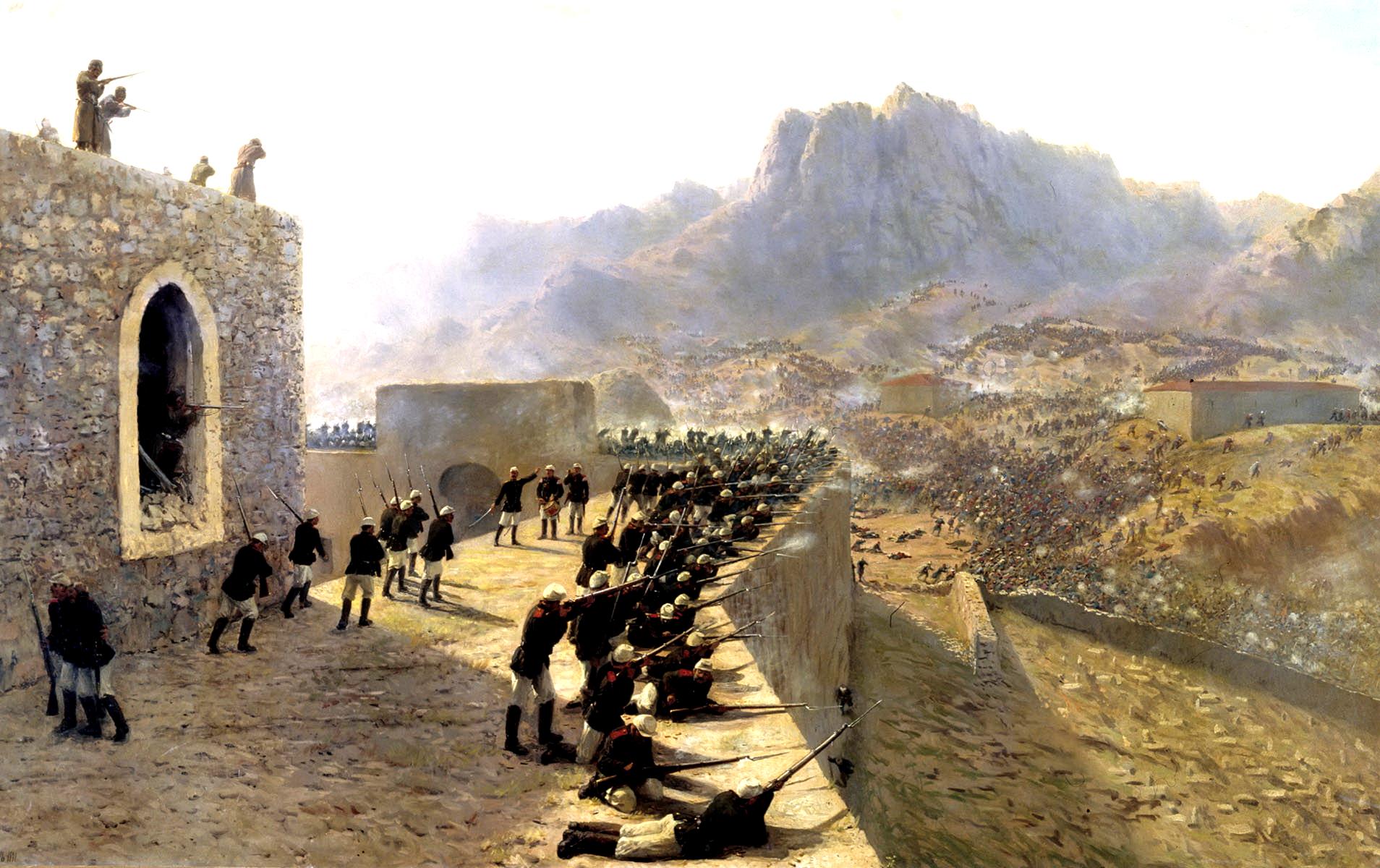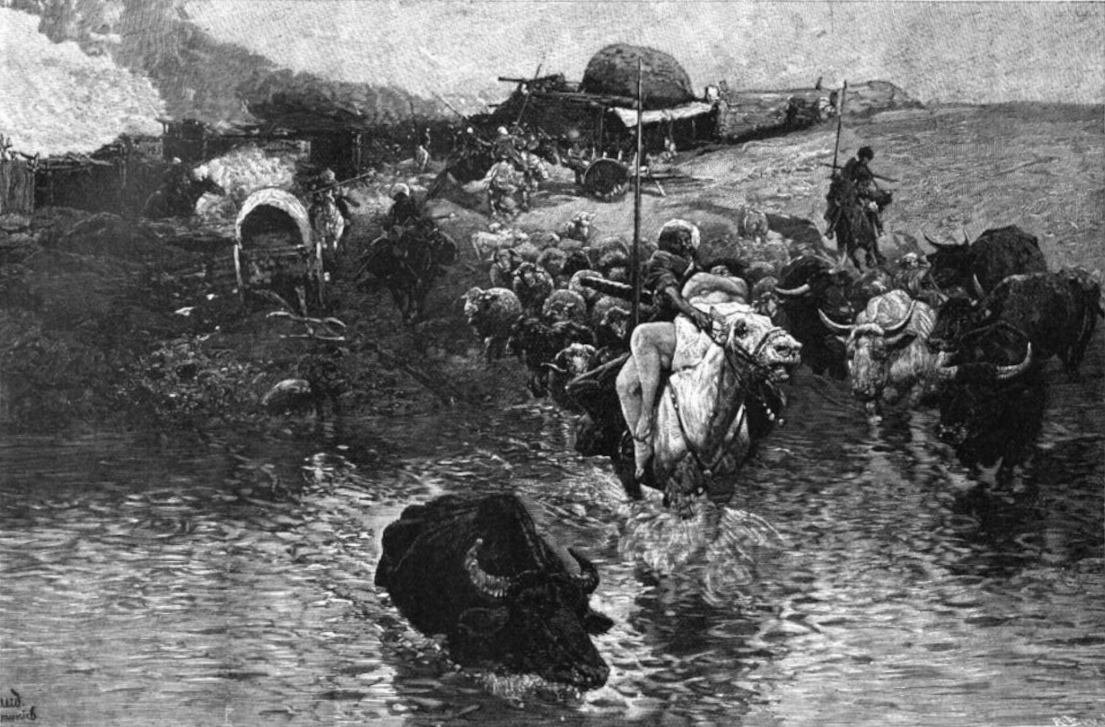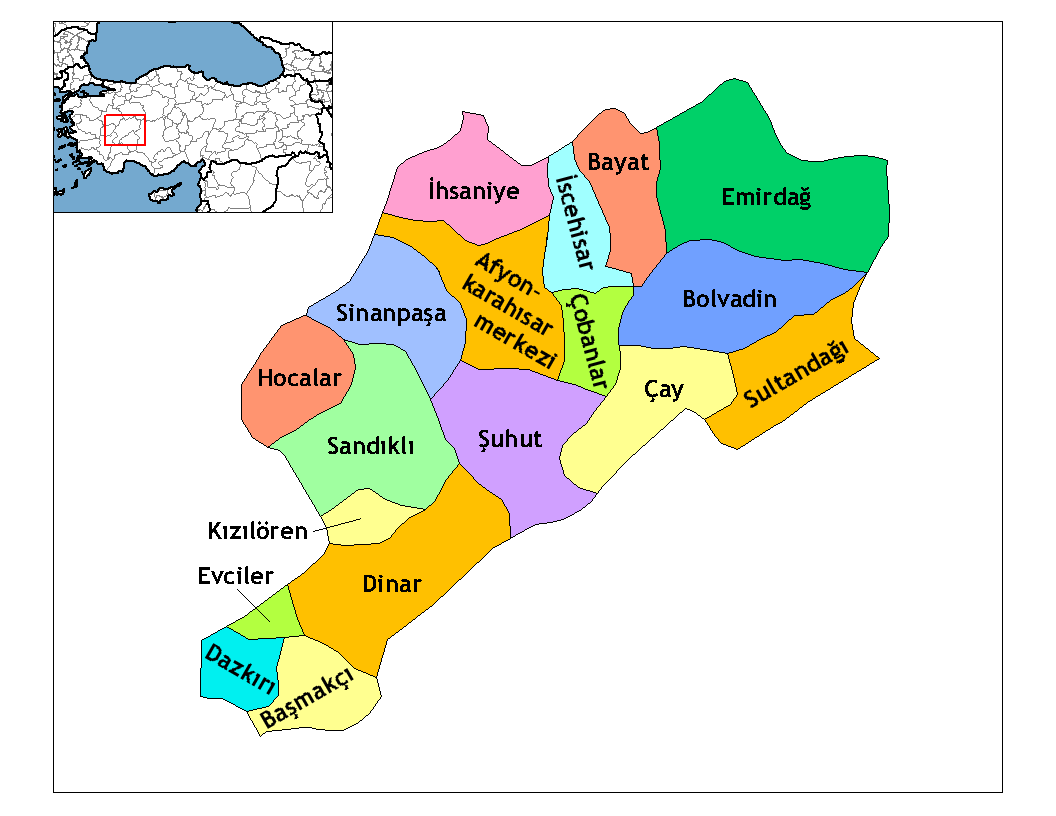|
Ağrı Province
Ağrı Province () is located in eastern Turkey, bordering Iran to the east and the Provinces of Turkey, provinces of Kars Province, Kars to the north, Erzurum Province, Erzurum to the northwest, Muş Province, Muş and Bitlis Province, Bitlis to the southwest, Van Province, Van to the south, and Iğdır Province, Iğdır to the northeast. Its area is 11,099 km2, and its population is 511,238 (2023). The provincial capital is Ağrı, situated on a high plateau. Doğubayazıt was the capital of the province until 1946. The current Wāli#Turkish term, governor is Mustafa Koç. The province is considered part of Western Armenia and was part of the ancient province of Ayrarat of Kingdom of Armenia (antiquity), Kingdom of Armenia. Before the Armenian genocide, modern Ağri Province was part of the Six vilayets, six Armenian vilayets. The majority of the province's population are ethnic Kurds. Districts Ağrı province is divided into eight Districts of Turkey, districts (capit ... [...More Info...] [...Related Items...] OR: [Wikipedia] [Google] [Baidu] |
Ağrı
Ağrı (; ) is a city in eastern Turkey, near the border with Iran. It is the seat of Ağrı Province and Ağrı District.İl Belediyesi Turkey Civil Administration Departments Inventory. Retrieved 12 January 2023. Its population is 120,390 (2021). It was formerly known as Karaköse. In the early Turkish republican period and until 1946, it was officially known as Karakilise. the city is now named after Ağrı, the Turkish name of Mount Ararat''.'' History Ağrı has old settlements such as Doğubeyazıt and Patnos, whose origins date back to the Middle Ages and the Islamic period. Over a long period of time, the region became part of the Urartu, Urartians, the Achaemenid Empire, the Macedonia (ancient kingdom), Macedonian Empire founded by Alexander the Great, Alexander, the Seleuc ...[...More Info...] [...Related Items...] OR: [Wikipedia] [Google] [Baidu] |
Armenian Genocide
The Armenian genocide was the systematic destruction of the Armenians, Armenian people and identity in the Ottoman Empire during World War I. Spearheaded by the ruling Committee of Union and Progress (CUP), it was implemented primarily through the mass murder of around one million Armenians during death marches to the Syrian Desert and the Forced conversion, forced Islamization of others, primarily women and children. Before World War I, Armenians occupied a somewhat protected, but subordinate, place in Ottoman society. Large-scale massacres of Armenians had occurred Hamidian massacres, in the 1890s and Adana massacre, 1909. The Ottoman Empire suffered a series of military defeats and territorial losses—especially during the 1912–1913 Balkan Wars—leading to fear among CUP leaders that the Armenians would seek independence. During their invasion of Caucasus campaign, Russian and Persian campaign (World War I), Persian territory in 1914, Special Organization (Ottoman ... [...More Info...] [...Related Items...] OR: [Wikipedia] [Google] [Baidu] |
Aras Mountains
Aras Mountains (), is a mountain range in northeastern Turkey. Also known as Haykakan Par (). It is located on the border of Erzurum, Kars, Ağrı and Iğdır provinces. It is a ridge at the middle of the Armenian highlands. It starts near sources of the Araxes river and stretches from the south bank as far west as Mount Ararat. The length of the ridge 200 km, the height - up to 3445 m. It was formed by a chain of volcanoes that arose along a major tectonic fault. The ridge is part of the watershed between the basins of the Caspian Sea and the Persian Gulf. History The Aras Mountains formed the borders of the Kingdom of Erikua and Urartu in ancient times. The crossings above it, on the other hand, have been the most important defense points where the borders of the two countries are protected. Due to the Armenian genocide, the ethnic composition of the region has changed radically over the last 150 years. In the 1920s, the newly-founded Turkish Republic started the Tur ... [...More Info...] [...Related Items...] OR: [Wikipedia] [Google] [Baidu] |
Tutak, Turkey
Tutak (), is a town in Ağrı Province in the Eastern Anatolia region of Turkey. It is the seat of Tutak District.İlçe Belediyesi Turkey Civil Administration Departments Inventory. Retrieved 12 January 2023. Its population is 7,059 (2021). It is located on a small plain surrounded by high mountains and watered by the , on the road from the city of Ağrı
Ağrı (; ) is a city in eastern Turkey, near the border with Iran. It is the seat of Ağrı Province and Ağrı District.
[...More Info...] [...Related Items...] OR: [Wikipedia] [Google] [Baidu] |
Taşlıçay
Taşlıçay (, , ) is a town in Ağrı Province in the Eastern Anatolia region of Turkey. It is the seat of Taşlıçay District.İlçe Belediyesi Turkey Civil Administration Departments Inventory. Retrieved 12 January 2023. Its population is 6,140 (2021). It is located in the valley of the on the road from the city of to Doğubeyazıt and Turkey's border with |
Patnos
Patnos (Armenian: Բադնոց, Latin transliteration: Badnoc‘ or Patnoc‘, Kurdish: Panos) is a city of Ağrı Province of Turkey on a plain surrounded by high mountains including Süphan, watered by tributaries of the Murat River. It is 82 km south of the city of Ağrı on the road to Van. It is the seat of Patnos District.İlçe Belediyesi Turkey Civil Administration Departments Inventory. Retrieved 12 January 2023. Its population is 61,837 (2021). The mayor is Abdulhalik Taşkın () in 2024. The plain has been settled since at least 1300BC and this was a centre of the |
Hamur
Hamur () is a town in Ağrı Province of Turkey Turkey, officially the Republic of Türkiye, is a country mainly located in Anatolia in West Asia, with a relatively small part called East Thrace in Southeast Europe. It borders the Black Sea to the north; Georgia (country), Georgia, Armen .... It is the seat of Hamur District.İlçe Belediyesi Turkey Civil Administration Departments Inventory. Retrieved 12 January 2023. Its population is 3,276 (2021). The mayor is Ismet Aslan ( YRP). References Populated places in Ağrı Province[...More Info...] [...Related Items...] OR: [Wikipedia] [Google] [Baidu] |
Eleşkirt
Eleşkirt () is a town of Ağrı Province in Turkey. It is the seat of Eleşkirt District.İlçe Belediyesi Turkey Civil Administration Departments Inventory. Retrieved 12 January 2023. Its population is 10,191 (2021). Its name is a transference from Alashkert (), the valley's former administrative centre but now a village known as Toprakkale. It was known as ''Vagharshakert'' in medieval sources. At the time of the Russo-Turkish War of 1877–1878 approximately half of the population consisted of and the rest of |
Diyadin
Diyadin (; ) is a town in Ağrı Province of Turkey, at the foot of Mount Tendürek, a high peak in the Aladağlar range that stands between Ağrı and the north shore of Lake Van. It is the seat of Diyadin District.İlçe Belediyesi Turkey Civil Administration Departments Inventory. Retrieved 12 January 2023. Its population is 20,302 (2021). Politics The mayor is Betül Yaşar (Peoples' Democratic Party (Turkey), HDP).Economy As of 1920, the area was known for its sulphur production.Places of interest *The Meya caves *The hot-springs *ChurchReferences External links [...More Info...] [...Related Items...] OR: [Wikipedia] [Google] [Baidu] |
Districts Of Turkey
The Provinces of Turkey, 81 provinces of Turkey are divided into 973 districts (''ilçeler''; sing. ''ilçe''). In the Ottoman Empire and in the early Turkish Republic, the corresponding unit was the ''qadaa, kaza''. Most provinces bear the same name as their respective provincial capital (political), capital districts. However, many urban provinces, designated as greater municipalities, have a center consisting of multiple districts, such as the provincial capital of Ankara Province, Ankara province, Ankara, The City of Ankara, comprising nine separate districts. Additionally three provinces, Kocaeli, Sakarya, and Hatay have their capital district named differently from their province, as İzmit, Adapazarı, and Antakya respectively. A district may cover both rural and urban areas. In many provinces, one district of a province is designated the central district (''merkez ilçe'') from which the district is administered. The central district is administered by an appointed pr ... [...More Info...] [...Related Items...] OR: [Wikipedia] [Google] [Baidu] |
Ağrı Location Districts
Ağrı (; ) is a city in eastern Turkey, near the border with Iran. It is the seat of Ağrı Province and Ağrı District.İl Belediyesi Turkey Civil Administration Departments Inventory. Retrieved 12 January 2023. Its population is 120,390 (2021). It was formerly known as Karaköse. In the early Turkish republican period and until 1946, it was officially known as Karakilise. the city is now named after Ağrı, the Turkish name of ''.'' History Ağrı has old settlements such as Doğubeyazıt and Patnos, whose origins date back to the Middle Ages and the Islamic period. Over a long period of time, the region became part of the[...More Info...] [...Related Items...] OR: [Wikipedia] [Google] [Baidu] |


